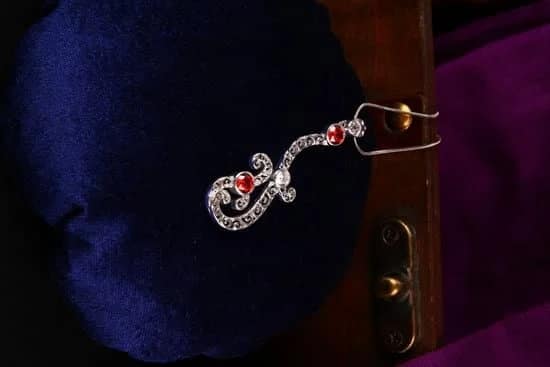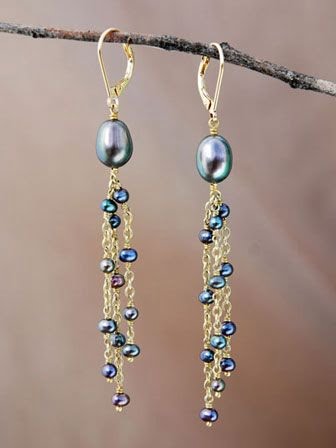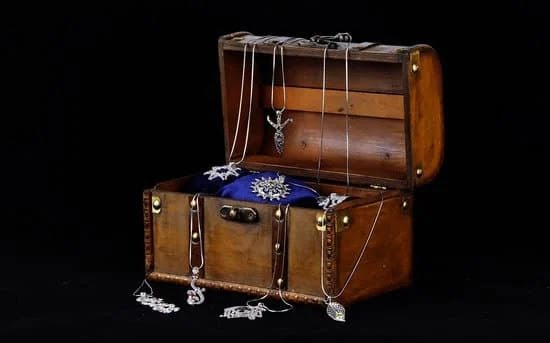Painting jewelry beads is a creative and rewarding art form that allows artists and crafters to add personalized touches to their accessories. Whether you are looking to create unique pieces for yourself or to sell, knowing how to paint a jewelry bead can open up a world of possibilities for your designs. From simple patterns to intricate designs, painting beads can elevate the look of your jewelry projects and make them truly one-of-a-kind.
When it comes to painting jewelry beads, it’s essential to understand the different types of beads available for painting. From wooden beads to glass beads, each material requires specific techniques and paints for optimal results. Preparing the bead surface before painting is also crucial to ensure that the paint adheres properly and lasts longer without chipping or fading. Choosing the right paint for jewelry beads is equally important, as different paints offer varying finishes and durability levels.
In this article, we will explore the step-by-step process of how to paint a jewelry bead effectively, from selecting the right materials to adding details and embellishments for a professional-looking finish. By following our tips and tricks, you’ll be able to create stunning painted bead jewelry pieces that stand out from the crowd. Let’s dive into the world of painted bead artistry and unleash your creativity in designing unique accessories.
Understanding Different Types of Beads for Painting
When it comes to painting jewelry beads, it is essential to understand the different types of beads available for your creative projects. Each type of bead material may require specific preparation and painting techniques to achieve the desired results. Here is a breakdown of some common bead materials used in jewelry-making:
- Glass Beads: Glass beads are popular choices for painted jewelry due to their smooth surface and reflective properties. To paint glass beads, ensure that they are clean and free from any dirt or residue before applying paint.
- Wooden Beads: Wooden beads provide a rustic and earthy look to painted jewelry designs. Before painting wooden beads, lightly sand the surface to create a smooth canvas for the paint to adhere to.
- Ceramic Beads: Ceramic beads are durable and come in various shapes and sizes, making them versatile for different jewelry styles. Clean ceramic beads thoroughly before painting to remove any oils or debris that may affect the paint’s adhesion.
Understanding the characteristics of each type of bead will help you determine the best approach for painting them effectively. Whether you prefer experimenting with different textures or aiming for a specific style, choosing the right bead material can significantly impact the outcome of your painted jewelry designs.
Preparation Is Key
Before diving into the painting process, it is crucial to prepare the bead surface adequately to ensure long-lasting and vibrant results. Here are some steps you can take to prepare your beads before painting:
- Clean the beads thoroughly with soap and water to remove any dirt, dust, or hand oils that may affect paint adhesion.
- If necessary, sand or buff the bead surface gently using fine-grit sandpaper to create a smooth texture for better paint application.
- Use a primer specifically designed for the bead material (e.g. glass primer for glass beads) to enhance paint adhesion and durability.
By taking the time to prepare your beads properly, you can set a solid foundation for successful painting outcomes that showcase your artistic vision effectively.
Preparing the Bead Surface Before Painting
Before you begin the process of painting your jewelry beads, it is crucial to properly prepare the surface to ensure that the paint adheres well and the final result is long-lasting. The first step in this preparation process is to clean the beads thoroughly.
You can use a mild soap and water solution to remove any dirt, dust, or oils that may be present on the surface of the beads. Once cleaned, make sure to let them dry completely before moving on to the next step.
After cleaning, you may also need to consider sanding the surface of the beads if they are smooth or glazed. Sanding helps create a rougher texture that allows the paint to grip onto the bead better. Use fine-grit sandpaper and gently roughen up the surface of each bead before wiping them clean with a damp cloth. This step is particularly important for glass or ceramic beads that have a shiny finish.
In addition to cleaning and sanding, it’s essential to prime your beads before painting them, especially if they are made of porous materials like wood or unglazed ceramics. A primer provides a smooth base for the paint to adhere to and can also help prevent color bleeding or uneven coverage.
Apply a thin layer of primer using a small brush or sponge, making sure to cover all surfaces evenly and allow it to dry completely before moving on to actually painting your jewelry beads.
| Importance of Preparing Bead Surface | Benefits |
|---|---|
| Properly preparing bead surface ensures paint adhesion | Long-lasting finish |
| Cleaning removes dirt, dust, and oils from beads | Paint adheres better |
| Sanding creates a rough texture for better paint grip | Avoids peeling or chipping |
Choosing the Right Paint for Jewelry Beads
Types of Paints for Jewelry Beads
When it comes to painting jewelry beads, choosing the right type of paint is essential for a successful and long-lasting result. There are various options available, such as acrylic paints, enamel paints, and even specialty paints designed specifically for use on beads. Acrylic paints are popular due to their fast drying time and versatility, while enamel paints provide a glossy finish that is ideal for more sophisticated designs.
Considerations When Selecting Paint
Before you start painting your jewelry beads, it’s important to consider the material of the bead and the desired look you want to achieve. For porous materials like wood or clay beads, acrylic paints work well as they adhere easily and provide good coverage. On the other hand, if you’re working with glass or metal beads, enamel paints may be a better choice as they create a smooth and durable finish.
Tips for Choosing the Right Paint
To ensure your painted jewelry beads look professional and last long, be sure to select a paint that is both suitable for the material of your beads and offers the desired finish. Additionally, consider factors like opacity, drying time, and whether or not additional sealant is required. By taking these considerations into account, you can create stunning painted bead jewelry pieces that will stand out in any collection.
Step-by-Step Guide on How to Paint a Jewelry Bead
Painting jewelry beads can be a creative and rewarding process, allowing you to customize your accessories to suit your style. Whether you are adding a pop of color to a plain bead or creating intricate designs, knowing how to paint a jewelry bead is essential.
Before diving into the painting process, it’s crucial to gather all the necessary supplies. These include the beads you want to paint, acrylic or enamel paint, fine-tipped paintbrushes, and a work surface that allows for easy maneuvering of the beads.
Once you have your supplies ready, start by preparing the bead surface for painting. Depending on the material of the bead, you may need to sand it lightly with fine-grit sandpaper to create a rough surface for better paint adhesion. After sanding, make sure to wipe down the beads with a damp cloth to remove any dust or debris. This step is essential for ensuring that the paint applies smoothly and evenly onto the bead.
When it comes to choosing the right paint for jewelry beads, acrylic paints are commonly used due to their versatility and durability. Acrylic paints come in various colors and finishes, allowing you to create different effects on your beads. Make sure to use paints that are specifically formulated for use on jewelry or other small items. Additionally, consider using metallic or pearlized paints for a unique touch on your painted beads.
| Supplies Needed | Acrylic Paints |
|---|---|
| Beads | Enamel Paint |
| Paintbrushes | Fine-grit Sandpaper |
Adding Details and Embellishments to Painted Beads
Using Different Techniques
Once you have painted the base color on your jewelry bead, it’s time to add some details and embellishments to make it truly unique. There are various techniques you can use to enhance the design of your bead. One popular method is using a fine-tipped brush to create intricate patterns or designs on the surface of the bead.
You can also use stencils or stamps to add interesting shapes or textures to your painted beads. Experiment with different techniques to see what works best for your desired look.
Adding Sparkle and Shine
To give your painted jewelry beads a touch of elegance, consider adding some sparkle and shine to them. You can use metallic paints or glitter accents to create a shimmering effect on the beads. Another option is to incorporate rhinestones or small gems onto the bead surface for added glamour.
Be sure to let each layer of paint dry completely before adding any embellishments to ensure they adhere properly. These extra touches will take your painted beads to the next level and make them stand out in any jewelry design.
Experimenting With Mixed Media
For a more eclectic and artistic look, consider experimenting with mixed media when embellishing your painted jewelry beads. Mix paints with other materials such as fabric, ribbon, feathers, or even metal accents to create one-of-a-kind pieces.
You can also try incorporating different textures like lace, twine, or clay onto the bead surface for added dimension and interest. Let your creativity run wild and don’t be afraid to try new combinations – you never know what stunning creations you may come up with.
Tips and Tricks for a Professional-Looking Finish
When it comes to painting jewelry beads, achieving a professional-looking finish is essential for creating high-quality pieces. Here are some tips and tricks to help you elevate the look of your painted beads:
Firstly, one of the key factors in achieving a professional finish is making sure to apply thin layers of paint. Building up color gradually will result in a smoother and more even application, avoiding any clumping or streaking that can occur with thick layers. Additionally, using high-quality paint specifically designed for craft projects will also contribute to a more polished end result.
Another important tip is to allow each layer of paint to fully dry before adding another layer. Rushing the drying process can lead to smudging or mixing of colors, ruining the overall look of your painted bead. Patience is crucial when it comes to painting jewelry beads, so take your time and allow each step to properly set before moving on.
Furthermore, investing in fine-tipped brushes or detail brushes can help you achieve precision and neatness when adding designs or patterns to your painted beads. These tools allow for greater control over your painting process, resulting in cleaner lines and more intricate details. By paying attention to these small details and incorporating these tips into your painting process, you can create professional-looking painted bead jewelry that stands out with its quality craftsmanship.
Curing and Sealing Painted Jewelry Beads
After you have finished painting your jewelry beads, the final step is to properly cure and seal them to ensure the longevity of your beautiful creations. Curing refers to the process of allowing the paint to fully dry and adhere to the bead surface, while sealing helps protect the paint from wear and tear over time. Properly curing and sealing your painted beads will not only enhance their durability but also give them a professional-looking finish.
To begin the curing process, make sure that your painted beads are placed in a well-ventilated area where they can air dry completely. Depending on the type of paint you used, curing times may vary. It is important to follow the manufacturer’s instructions for drying times to ensure that the paint sets properly. Additionally, you can use a hairdryer on a low heat setting or place your beads under a heat lamp to speed up the drying process.
Once your painted beads are fully dried and cured, it is essential to seal them with a protective coat to prevent chipping, fading, or scratches. There are various sealants available in spray or brush-on forms that can be applied over the painted surface of your beads. Some popular options include clear varnish, mod podge, or resin sealants.
Before sealing your beads, make sure to read and follow the instructions on the sealant’s label for best results. The sealing process will give your painted jewelry beads an added layer of protection and shine for a professional look.
- Air dry painted beads in a well-ventilated area
- Speed up drying process with a hairdryer or heat lamp
- Seal painted beads with protective coat such as clear varnish or mod podge
Inspiration and Ideas for Painted Bead Jewelry Designs
Painting jewelry beads can be a fun and creative way to personalize your accessories and create unique pieces that showcase your style. By exploring different types of beads for painting, preparing the bead surface properly, choosing the right paint, and adding details and embellishments, you can elevate the look of your jewelry pieces.
In this article, we have provided a step-by-step guide on how to paint a jewelry bead, along with tips and tricks for achieving a professional-looking finish.
When it comes to inspiration and ideas for painted bead jewelry designs, the possibilities are endless. You can experiment with different color combinations, patterns, and techniques to create one-of-a-kind pieces that reflect your personality. Whether you prefer bright and bold hues or subtle pastel tones, there are countless ways to express your creativity through painted bead jewelry.
Don’t be afraid to think outside the box when it comes to designing painted bead jewelry. You can incorporate mixed media elements such as glitter, metallic accents, or even miniature charms to add depth and dimension to your creations. Remember that practice makes perfect when it comes to mastering the art of painting jewelry beads. With dedication and patience, you can develop your own signature style and create stunning pieces that will be admired by others.
Frequently Asked Questions
What Is the Best Paint for Painting Beads?
The best paint for painting beads is acrylic paint. Acrylic paint adheres well to various surfaces, including wood, plastic, and glass – common materials used in making beads. It also comes in a wide range of colors and finishes, making it versatile for bead painting projects.
How Do You Paint Beads Quickly?
To paint beads quickly, it’s essential to use the right tools and techniques. One way to speed up the process is by using a small brush or sponge applicator specially designed for tiny details. Additionally, organizing your work area with all necessary supplies readily available can help streamline the painting process.
Can You Paint Jewelry With Acrylic Paint?
It is possible to paint jewelry with acrylic paint, but it may not be the most durable option for items that will receive a lot of wear and tear. Acrylic paint can be used on metal, clay, or wooden jewelry pieces as long as they are properly prepared by cleaning and priming the surface before painting.
However, for items that will be frequently handled or exposed to moisture, it may be better to use specialized jewelry paints or coatings for longer-lasting results.

Welcome to my jewelry blog! My name is Sarah and I am the owner of this blog.
I love making jewelry and sharing my creations with others.
So whether you’re someone who loves wearing jewelry yourself or simply enjoys learning about it, be sure to check out my blog for insightful posts on everything related to this exciting topic!





